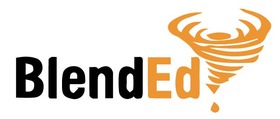BlendEd Best Practices - Extending Transformational Geometry
Unit Title: Extending Transformational Geometry
Title and Description
This unit is titled Extending Transformational Geometry
In this unit, the student will learn about transformational geometry. The student will learn about congruence transformations, such as reflections, translations, and rotations, and will also learn about geometric patterns such as symmetry and tessellations.
The
resource was submitted by Theron Troxel, Freeman Public Schools, as part of the Nebraska ESUCC Special
Project BlendEd Best Practices.
Content Area Skill:
Add Skill(s)
Mathematics
Digital Age Skill(s):
Add Skill(s)
N/A
Duration of Unit:
2 Weeks
Overview of Unit:
In this unit, the student will learn about transformational geometry. The student will learn about congruence transformations, such as reflections, translations, and rotations, and will also learn about geometric patterns such as symmetry and tessellations.
Empower Learners:
Content Area Skills (NE and ISTE Standards):
MA 11.3.2.g Perform and describe positions and orientation of shapes under a single translation using algebraic
notation on a coordinate plane.
MA 11.3.2.h Perform and describe positions and orientation of shapes under a rotation about the origin in multiples of
90 degrees using algebraic notation on a coordinate plane.
MA 11.3.2.i Perform and describe positions and orientation of shapes under a reflection across a line using algebraic
notation on a coordinate plane.
MA 11.3.2.j Perform and describe positions and orientation of shapes under a single dilation on a coordinate plane.
Student Friendly Objectives:
MA 11.3.2.g I can identify how the image has changed from the preimage during a translation and can use algebraic notation.
MA 11.3.2.h I can identify how the image has changed from the preimage during a rotation and can use algebraic notation.
MA 11.3.2.i I can identify how the image has changed from the preimage during a reflection and can use algebraic notation.
MA 11.3.2.j I can identify how the image has changed from the preimage during a dilation and can use algebraic notation.
Empower Learner Activity:
Detailed Description:
Student will set goals with the student-friendly objective and will aim to do better on the same test after the unit is taught.
Re-evaluate students progress by comparing the pre and post-test results.
Knowledge Application:
The purpose of Knowledge Application is to promote deeper-level learning through student creation of learning artifacts demonstrating both Content Area and Digital Age Skills. A key goal is to provide some degree of control over how students will show what they know.
Artifact Profile:
Title of the Artifact:
Students had a choice of three different methods to promote deeper-level learning. The three activities were podcast, flipgrid, or Google Slides (or poster).
Detailed Description:
Students had the choice to work with a partner or by themselves and “present” one lesson in chapter nine. Students had three choices on how to present the lesson.
Content Area Skills Addressed:
MA 11.3.2.g, MA 11.3.2.h, MA 11.3.2.i, MA 11.3.2.j
Digital Age Skills
Empowered Learner, Knowledge Constructor, Innovative Designer, Computational Thinker
Link to Rubric
Knowledge Deepening:
Detailed Description:
During Knowledge Deepening, the Content Area Skills required of the Learning Artifact are broken down into bite-sized tasks. A key goal is to provide some degree of choice over how students practice the Content Area Skills.
Tasks
Task 1: Transformation Worksheet
Description: Student needs to apply translations, rotations, reflections, and dilations to create a cartoon duck.
| Must Do’s: Students had to do the homework problems on Canvas from sections 9-1 to 9-7. This were 4 problems per section. |
May Do’s: Students had to pick one way to deepen understanding. Choice 1 was a transformation worksheet. |
Resources: Link |
Task 2: Khan Academy
Description: In this topic you will learn about the most useful math concept for creating video game graphics: geometric transformations, specifically translations, rotations, reflections, and dilations. You will learn how to perform the transformations, and how to map one figure into another using these transformations.
| Must Do’s: Students had to do the homework problems on Canvas from sections 9-1 to 9-7. This were 4 problems per section. |
May Do’s: Students had to pick one way to deepen understanding. Choice 2 was Khan Academy. |
Resources: Link |
Task 3: Desmos Activity
Description: In this activity, you'll use your understanding of translations, reflections, and rotations to complete a round of transformation golf.
| Must Do’s: Students had to do the homework problems on Canvas from sections 9-1 to 9-7. This were 4 problems per section. |
May Do’s: Students had to pick one way to deepen understanding. Choice 3 was a Desmos Activity. |
Resources: |
Direct Instruction:
Detailed Description
Direct Instruction scaffolds the learning process for all students. A key goal is to incorporate BlendEd strategies to effectively differentiate instruction in order to maximize learning.
Learning Path:
Include in the table below the breakdown of each day of the unit.
| Day # | Description | BlendEd Model | Resources |
| 1 | Sections 9-1 to 9-3 |
Direct Instruction/Flex Model |
Examview questions from the book. |
| 2 |
9-4 and 9-7 |
Direct Instruction/Flex Model |
Examview questions from the book. |
| 3 | 9-5 and 9-6 | Direct Instruction/Flex Model | Examview questions from the book. |
| 4 | Homework |
Station Rotation |
White boards and Chromebooks |
| 5-6 |
Presentation |
Self-paced/Flex Model |
Chromebooks, poster, markers, etc. |
| 7-8 |
Extra Practice |
Self-paced/Flex Model |
Chromebook, Desmos, Khan Academy, Worksheet |
| 9-10 |
Project |
Self-paced/Flex Model |
Chromebook, Google Slides, poster, markers, etc. |
Resources:
Provide a list of resources
